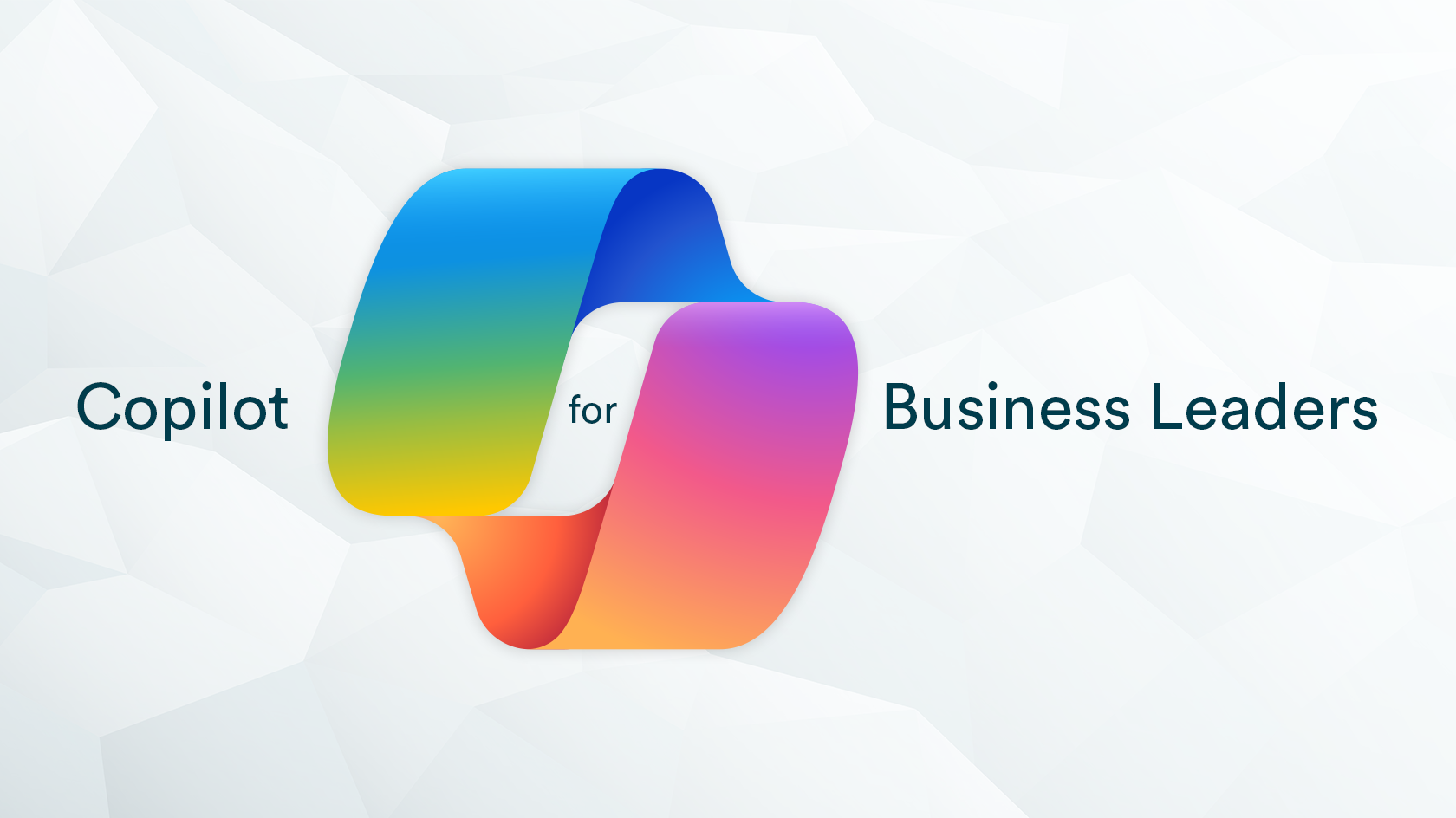
Since its introduction to the world late last year, Copilot has been a massive topic of discussion. Whether you’re all-in on Copilot changing the world and the way that we work, or if you’re more pessimistic and see it as a bit of a gimmick, it’s likely that you have an opinion on it.
Regardless of which way you’re swaying, there is one thing that no one can ignore… the cost. Copilot is expensive – there’s no two ways about it. But it is an investment worth making if you do so with due care and consideration. That requires making sure you are AI ready and having a tangible, measurable use case for its adoption.
To see if you’re in a position to make a success of Copilot, you’ll need to ask yourself a few questions. Don’t worry, this blog should help you answer them…
Who?
Who will benefit most from Copilot? It would be silly to throw all your eggs in one basket and bag a Copilot license for everyone in the business. Deployment must be strategic, so think about which teams and individuals need the help.
Identify who may be under-performing, or potentially those who have a lot of administrative work in their jobs. Management roles across the organisation stand to benefit, with it being reported that they save up to 30 per cent of their admin time with Copilot.
Roles that see their calendars stacked with meetings will also get the best out of Copilot. We’ve seen evidence of that at Cloud Direct, with heavy use of the transcript and recap functions in Teams – findings which are backed up by Microsoft research, which shows that ‘users were able to get caught up on a missed meeting nearly four times faster.’
Making sure you assign your licenses to the right people is incredibly important. It’s equally important that you keep track of this, and check in with those who are using Copilot and the value they’re extracting from it. Assigning a license to someone who ultimately doesn’t use it very much is throwing money down the drain every month, and licenses can easily be reallocated within the organisation.
What?
The next important step is identifying what it is going to be used for. Are your sales team tired of writing tedious follow up emails? Are project managers struggling with tracking projects? Are customer support stretched and need something to listen in and summarise common issues faced by customers?
Adopting Copilot with a clear vision of what it is going to help with means that you can leverage it more effectively, and get the biggest bang for your buck. Think about asking your teams what part of their job they wish could be done quicker, more efficiently, or eradicated altogether, so that you can plot your route before you set sail.
Where?
Let’s zoom out from the individuals in the who section, and focus on the where – specifically, where within your organisation Copilot will make the biggest splash. Think of the teams, departments or geographies that could benefit most from administrative automation, and get to know their challenges.
Let’s take a quick look at sales. Love them or loathe them, a salesperson’s time is critically important. The less time they spend on the menial, tiresome tasks, the more time they can spend generating revenue. “In sales, Copilot has helped sellers at more than 30,000 organisations, to enrich their customer interactions,” said Microsoft CEO Satya Nadella. So much for AI making things less human.
If you are looking at a wider rollout of Copilot, focusing on a single department is a sensible way to start. It’s a great way to test the waters and assess if your investment is going to be worthwhile. Discover which team will reap the biggest rewards, and work from there.
Why?
The next thing you have to ask yourself is why. Why are you looking to adopt Copilot in the first place? Not because your competitors are, not because it’s the word on everyone’s lips, not so that you can put your feet up and let AI replace you… push yourself, and make sure those reasons and use cases are valid, tangible and to the benefit of the business. Copilot is a shiny new toy that everyone seems to want to play with – Ally Financial, Coca-Cola and Rockwell Automation, to name but a few – but it doesn’t mean you should just whip out the cheque book straight away.
Your reasoning shouldn’t be just because those big companies or your competitors are doing it. A justifiable why is more important than just a why. If you are to take your time and use Copilot to actually address and tackle your specific challenges, then those competitors who are spending the money just to say they have it are the ones that will suffer in the long term.
AI is already finding its way into the hiring process, too. If you’re a company that can demonstrate its use of AI and how it will improve the work life of a potential hire, then you are going to be seen as a business that people want to work for. On the other hand, those who have just rushed to adopt the shiny new toy without a plan in place won’t make the same impression.
How?
We’ve saved the biggest question until, well, nearly the end. How are you going to get there? How are you going to prepare yourself, your team, and your organisation to adopt Copilot?
We’re getting more technical here, but setting out a roadmap for your Copilot adoption is critical. There’s a lot to consider, but we’ve broken the process down into seven simple steps that you can tick off, one by one, with each moving you closer to AI readiness.
- Step One: Migrating to the cloud
- Step Two: Optimising your cloud platform
- Step Three: Creating data strategy & fostering data culture
- Step Four: Securing and properly governing data in the cloud
- Step Five: Building specific use cases for data & AI tools
- Step Six: Gaining insights for cloud-based data with data analysis
- Step Seven: Implementing an AI strategy
There’s a lot to take in on this section – too much to cover in this blog post. If you are looking to learn more about how to become AI ready and prepare your organisation for Copilot adoption, then check out this webinar we did late last year.
When?
Finally, it comes to working out when you are going to adopt Copilot. You can’t rush into it, otherwise you’ll fall flat on your face, but drag your heels and you’ll be left in the dust of your competitors.
Successful adoption relies on the foundations you lay – it’s preparing your data, securing your perimeter and, perhaps most importantly, training your team. All of this needs to be done before your Copilot rollout, instead of scrabbling around for quick fixes once you’ve got the ball rolling.
Beyond adoption you also need to consider its use cases, and in which scenarios your team should look to lean on it. There’s also training to thing about scheduling in – Copilot is not as simple as all the fancy videos make it look, and it requires practice and training if you want to make sure you get the most out of all the available tools.
Making sure you train your team how to do this as you roll it out is important. You need to create a clear training plan that teaches your teams how to get the most out of Copilot –everyone knows how to ask ChatGPT to write a generic email or to rank their favourite footballers, but Copilot requires more from its users. Despite what is promised, you can’t simply ask it to do all your unwanted jobs for you. Your team need to become prompt engineers, and learn how to ask Copilot the right questions and give it the right commands to maximise its output. Without proper training, your team will be left with a glorified chatbot that is more of a hindrance than a help – and that’s a waste of their time, and your money.
…and what next?
Copilot’s release saw it become the world’s most exciting corporate toy, but it is so much more than that. It can unlock your business potential, freeing up your team’s time to spend on more innovative, creative, and meaningful tasks. It isn’t perfect (yet), and nor is it a worthwhile investment if you aren’t willing to do the work beforehand.
Luckily, there’s a team of experts on-hand that have been there and got the t-shirt – and you’re already here. Let’s talk about how we can get your organisation AI ready, and start making the most of Microsoft’s market-leading assistant.




